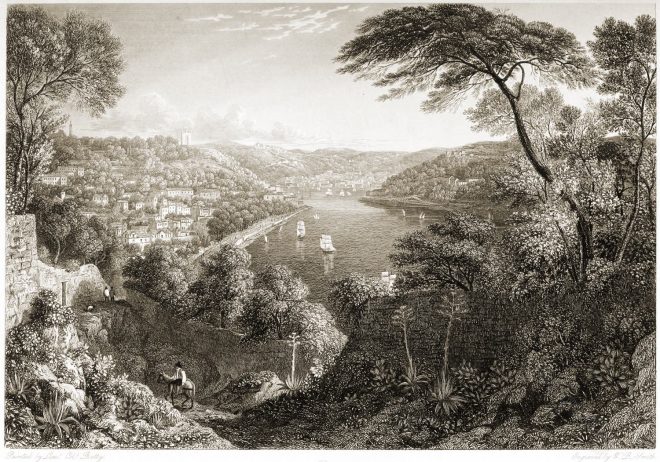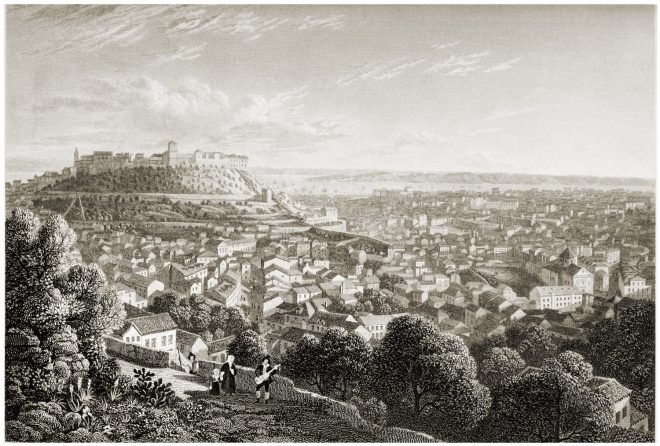View of the city and the Douro River from the verge of the granite precipice on the north side of the Douro.
Category: Portugal
Oporto. The busy scene of the Custom-house Quay.
At the Ribuleira-street, a very interesting view presents itself. The foreground is occupied by the busy scene of the Custom-house Quay.
View to the most ancient part of the city of Oporto from Villa Nova.
The annexed view, taken at the foot of the Serra, near the Bridge of Boats, exhibits the most ancient part of the city of Oporto.
Full view of the city of Oporto, from the Quay of Villa Nova.
Leading the spectator onward, and crossing to Villa Nova on the southern bank of the Douro, we come in full view of the city of Oporto
Oporto, from the Monte D’Arabida. Portugal 1832.
A view of the city of Oporto as seen from the Monte d’Arabida, looking directly up the majestic and beautifully winding Douro.
Oporto. The Mouth of the Douro from Massarelos.
The approach to Oporto by sea is remarkably beautiful. The view given in the vignette is taken from the garden of the Quinta of Senhor Joao Pacheco.
Panorama of Lisbon in incomparable splendour from Almada.
Opposite to Lisbon stands Almada, on the summit, and near the east end, of the high cliffs, which extend along the south bank of the Tagus, from thence to the sea.
Characteristic scene. Pillory of Lisbon. The Largo do Pelourinho.
The Largo do Pelourinho is so named from the small ornamental column which stands in its centre.
Lisbon, from the Chapel Hill of Nossa Senhora da Monte.
One of the most comprehensive views of the city of Lisbon may be obtained from the above-named eminence, within a short distance from the Chapel of Nossa Senhora da Monte.
Lisbon. Selected city view from Rua de San Miguel.
The ancient city of Lisbon from the Rua de San Miguel. Select views by Robert Batty.










